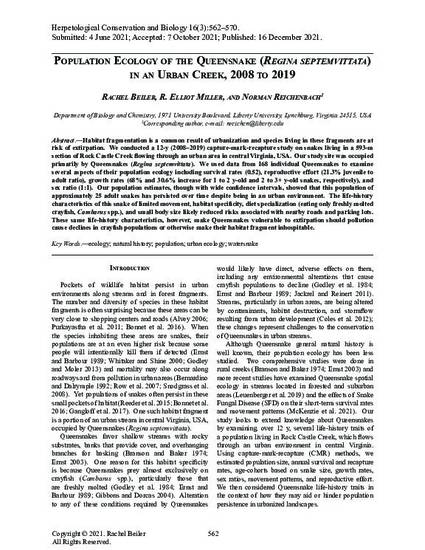
Habitat fragmentation is a common result of urbanization and species living in these fragments are at risk of extirpation. We conducted a 12-y (2008–2019) capture-mark-recapture study on snakes living in a 593-m section of Rock Castle Creek flowing through an urban area in central Virginia, USA. Our study site was occupied primarily by Queensnakes (Regina septemvittata). We used data from 168 individual Queensnakes to examine several aspects of their population ecology including survival rates (0.52), reproductive effort (21.3% juvenile to adult ratio), growth rates (68% and 30.6% increase for 1 to 2 y-old and 2 to 3+ y-old snakes, respectively), and sex ratio (1:1). Our population estimates, though with wide confidence intervals, showed that this population of approximately 25 adult snakes has persisted over time despite being in an urban environment. The life-history characteristics of this snake of limited movement, habitat specificity, diet specialization (eating only freshly molted crayfish, Cambarus spp.), and small body size likely reduced risks associated with nearby roads and parking lots. These same life-history characteristics, however, make Queensnakes vulnerable to extirpation should pollution cause declines in crayfish populations or otherwise make their habitat fragment inhospitable.

Retrieved from: http://www.herpconbio.org/Volume_16/Issue_3/Beiler_etal_2021.pdf